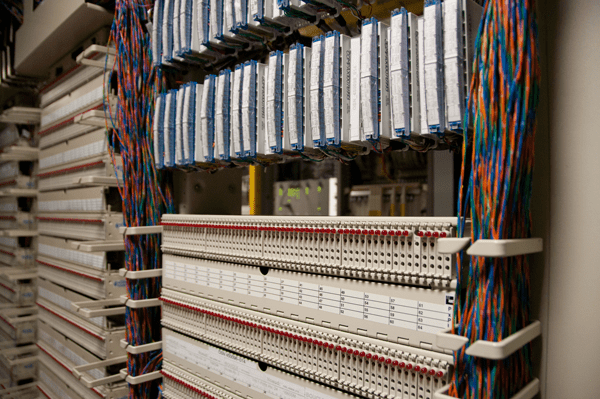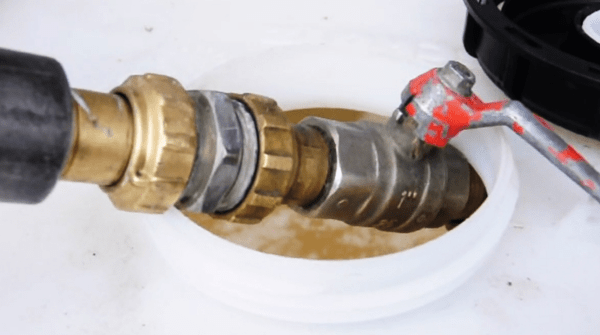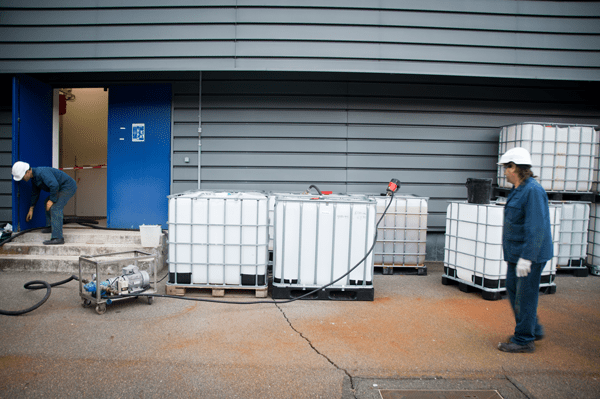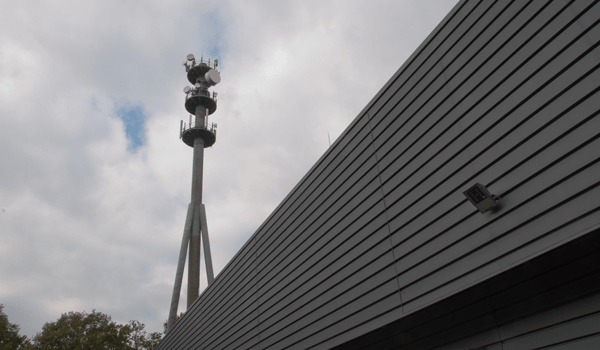
Situated in the Loire Valley, the data centre houses latest generation servers and telecoms equipment that produce a significant amount of heat (approximately 99% of the energy consumed, powers optical lasers). To ensure that this equipment operates correctly, it is essential that rooms are cooled accurately, reliably and continuously.
To meet these requirements, the data centre has two 170 kW Climaveneta cooling units in the roof, providing cooling. The rooms are cooled by a secondary system which supplies an air treatment unit, five chambers and twelve convector fans. Heat is exchanged between the two loops via a 2000 litre mixing vessel.
Noël T., the operations and maintenance manager for the site, decided to have the systems cleaned and to replace the ice water. Analysis of the glycol revealed the presence of scale, corrosion and a -4°C protection level which would be inadequate for freezing protection and correct operation of the installation.
A custom turnkey solution
Since the data centre’s servers run 24 hours a day, the cooling system also has to remain stable and run continuously. “I needed a solution where production wasn’t stopped at all and that’s why I went to Climalife,” says Noël.
Dalkia, the site maintenance sub-contractor, was then assigned to work with Climalife staff. Together, they met the challenge and solved this particular problem.
“In order to refurbish, optimise and give the installation a long life, we firstly recommended remedial cleaning with Thermonett, followed by a complete draining of the system and finally reconditioning with Greenway Neo. This will achieve a level of protection appropriate to winter weather conditions, while taking constraints on the customer into consideration,” explained Adem Oulebsir, Climalife’s key account manager.
“Having the Climalife service team involved allowed us to benefit from their technical expertise in fluids and methods dedicated to efficient recovery (having IBCs at hand, a recovery unit, pump, connectors, hoses, etc.). They also ensured that our waste recovery management complied with operational and administrative restrictions.”
The operation was carried out successfully in two days, using the procedure detailed below.
Process
1. System cleaning

The system is cleaned before it is re-conditioned. The Dalkia team inject a 1% dilution of Thermonett® sludge remover, supplied by Climalife. Thermonett® is a non-oxidising product, that eliminates deposits, metal oxides and sludge formed in the system. The product remains in circulation in the glycol system for four weeks.
2. Draining

Climalife drain and flush the system. To avoid interrupting the operation of the installation, technicians drain the cleaning water while injecting mains water into the system. It is necessary to ensure that the pressure is maintained above 1 bar by balancing the speed of the water added against that being drained out: “The chiller units should not detect any difference in pressure, so they do not suddenly stop and go into safe mode,” says Noël T.
The cleaning water is recovered in IBCs and analysed as work proceeds. When 0°C freezing protection and a pH of 7 is achieved, the system is ready to be charged with Greenway® Neo.
3. Reconditioning the installation

For a more environmental approach, instead of using a conventional, petroleum-based fluid, Climalife suggested a plant-based coolant based on 1-3 propanediol: concentrated Greenway® Neo. This plant-based product will protect the system from freezing and corrosion. It is bacteriostatic and also prevents the formation of sludge in systems. To ensure protection at -19°C, a 42% solution of Greenway® Neo is used.
4. Recovery and waste processing
 10 cubic metres of cleaning water was recovered in IBCs and will be processed to remove the used product, in compliance with current regulations. Used coolants are classed as hazardous substances (Environment Code, appendix II of article 541-8). They must be recovered and disposed of (directive no. 75-442-EEC) and must be accompanied by a compliant waste document when transported (order 04/01/1985).
10 cubic metres of cleaning water was recovered in IBCs and will be processed to remove the used product, in compliance with current regulations. Used coolants are classed as hazardous substances (Environment Code, appendix II of article 541-8). They must be recovered and disposed of (directive no. 75-442-EEC) and must be accompanied by a compliant waste document when transported (order 04/01/1985).
“What I liked about your company was that you gave me a solution for replacement under load, using a new, green, and more efficient product. It was a little more expensive, but it has a longer service life. So it’s cost-effective.” Noël T., project manager.

